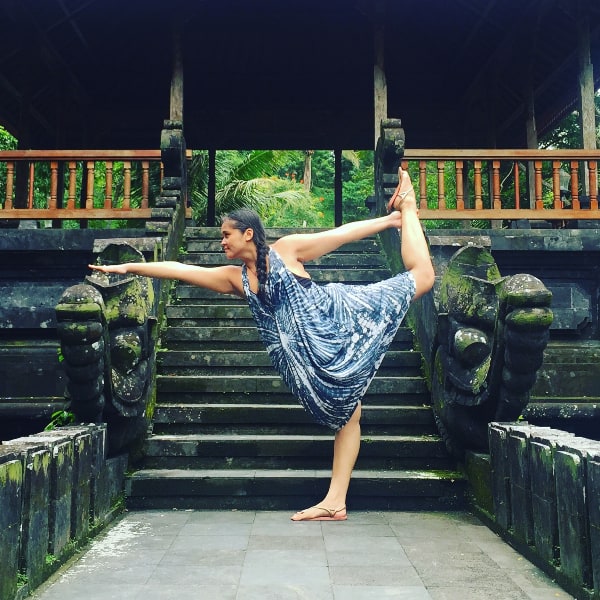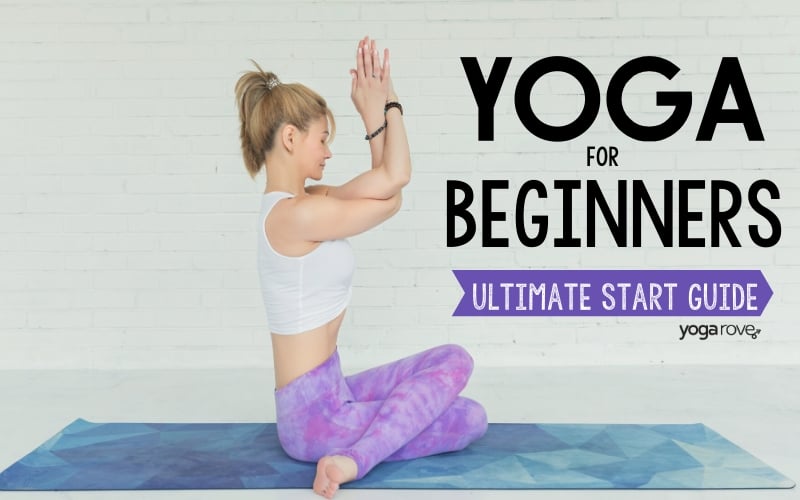This post may contain affiliate links. Please read our disclosure for more info.
Do you suffer from compression, numbness, tingling, or weakness in your wrists and hands? If so, you may have Carpal Tunnel Syndrome. This ailment is characterized by compression of your median nerve, which causes discomfort in your hands or fingers. Looking for healing and ease in your body? The ancient practice of yoga is a popular activity for those who live with Carpal Tunnel Syndrome.
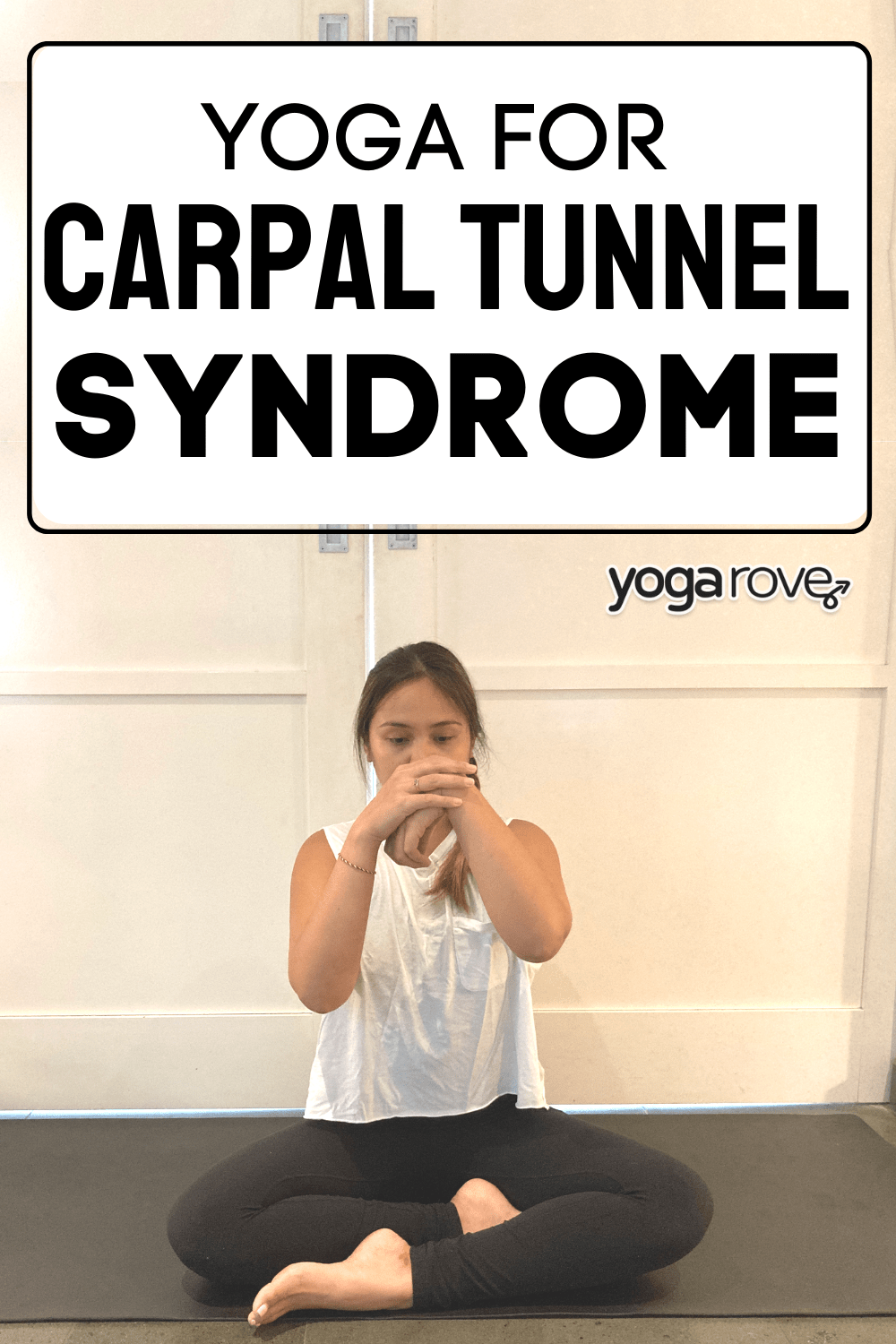
There are many yoga poses and exercises that can reduce the symptoms and pain of Carpal Tunnel Syndrome. Though yoga is not proven to fully cure Carpal Tunnel Syndrome, a consistent and regular practice of specific yoga poses for carpal tunnel can definitely help to ease your symptoms.
If you are diagnosed with Carpal Tunnel Syndrome, it is likely that your doctor has suggested stretching your forearms, wrists, and hands to alleviate your symptoms. There are numerous yoga poses that you can practice that are similar to popular stretches for Carpal Tunnel Syndrome. You can easily supplement your stretches with an accessible yoga routine that promotes healing, stretching, and opening on your wrists, hands, and fingers. These poses can be practiced in group yoga classes at yoga studios, or even privately in the comfort of your own home.
Beginning Your Yoga for Carpal Tunnel Syndrome Practice
Starting a yoga practice for Carpal Tunnel Syndrome will not only help to promote healing in your wrists, hands, and fingers. Your regular yoga practice will also benefit your entire body and mind. Keep in mind that if you are beginning your yoga practice, there will be certain poses that may need to be modified or even skipped so as not to put more pressure on the wrists.
A few things to remember when beginning your yoga practice for Carpal Tunnel Syndrome:
- Get clearance from your doctor to make sure that it is safe for you to practice yoga
- Focus on poses that stretch, open, and strengthen the upper body
- Be mindful about practicing poses that place more pressure on your wrists
- Make sure that you modify any poses that feel uncomfortable in your body
The Best Yoga Poses for Carpal Tunnel Syndrome
Yoga is great for keeping your body and joints lubricated and moving. If you have Carpal Tunnel Syndrome, here are a few of the best poses that you can practice.
Cat and Cow
A staple in most yoga warm-ups, the breathing, and movement of Cat/Cow opens up your entire body. Play around by pointing your fingertips to the top of the mat, toward your body, or to the sides of the room to open up your wrists.
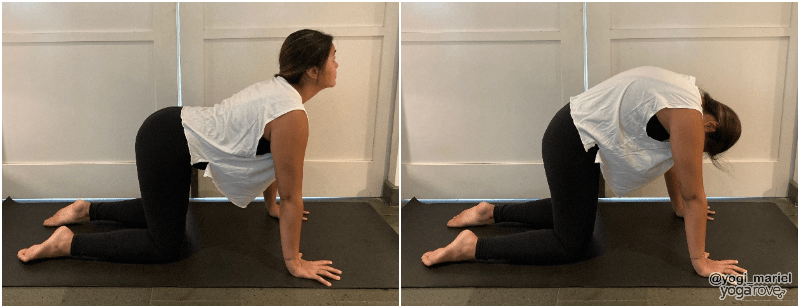
- Begin on all fours, Make sure that your hands are under your shoulders with the fingers spread wide, and that your knees are directly under your hips.
- As you inhale breathe in through the nose and arch your back.
- As you exhale, round the spine, tuck the chin to your chest, and look towards your belly button.
- You can play around with bringing your fingertips to point to the sides of the room or toward your body to open up the wrists.
Locust Pose
This posture may feel a little uncomfortable at first. Practice taking your hands closer together bit by bit.
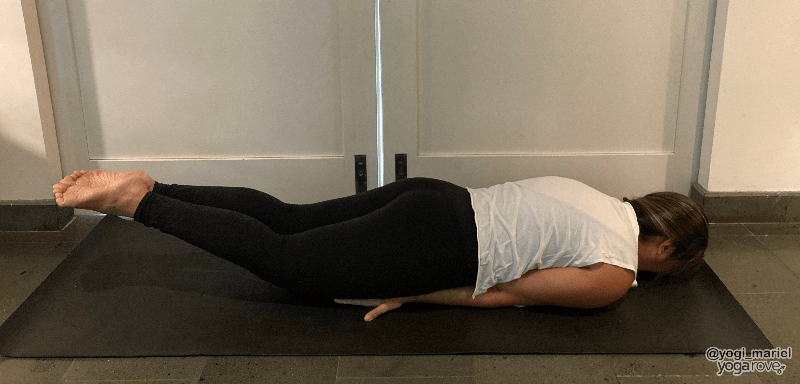
- Begin on your belly with your chin down your mat.
- Take your arms and hands underneath your body, with your palms touching the mat.
- Straighten your arms as much as you can underneath your body.
- Try to get your pinky fingers touching together in order to promote more circulation in the wrists, hands, and arms.
- Spread your fingers wide on the mat, almost as if you are in Downward Dog.
- Shift your weight forward to the shoulders and lift both of your legs up into the air.
- Squeeze your legs together, point your toes, and straighten your legs.
- Hold for 3-5 breaths and gently make your way back down.
Cobra or Upward Facing Dog
This pose promotes circulation in the body, opens the chest, and strengthens your wrists.
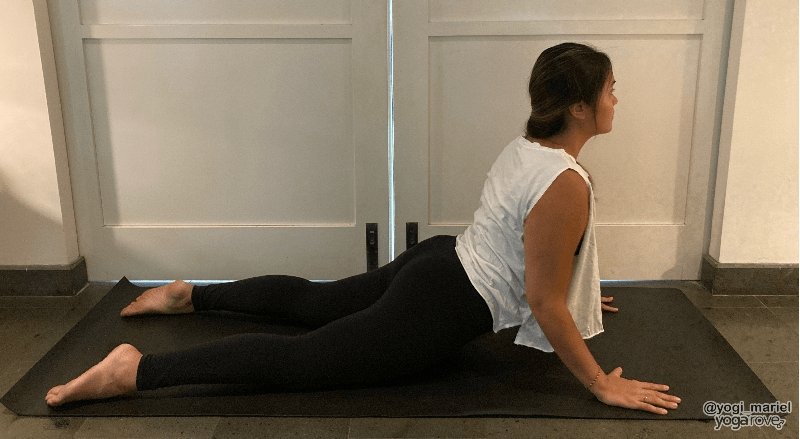
- Start on your belly.
- Place your hands underneath your shoulders with your fingers spread wide and your elbows hugging in close to your body.
- Lift your chest up, roll your shoulders back, and lift up through your heart.
- Stay here for Cobra pose, or lift your hips and thighs off the mat for Upward Facing Dog.
- Keep your heart lifted, look forward, and relax your shoulders.
- Stay for 3-5 breaths and slowly make your way down to your mat.
What Causes Carpal Tunnel Syndrome?
The pressure on your median nerve and your wrists can cause pain, inflammation, and swelling. Often, this is also accompanied with obstructed blood flow, which can cause pain and tingling in your fingers, wrists, and hands. This pressure can be caused by different conditions or overuse, such as typing on a computer all day or scrolling on your smartphone. Women are three times more likely to develop Carpal Tunnel Syndrome than men.
Conditions and causes linked to Carpal Tunnel Syndrome include:
- Wrist trauma or fracture
- High blood pressure and diabetes
- Thyroid dysfunction
- Arthritis
- Overuse or overextension of the wrists from activities including keyboard or computer use, use of power tools, repetitive movement like typing or playing the piano
- Smoking
- High BMI
- Jobs that involve repetitive wrist movements such as construction, manufacturing, or desk jobs
Warming Up Your Wrists Before Practice
Warming up your body is always a good idea before practicing your yoga pose for Carpal Tunnel Syndrome. In order to prevent further injury or discomfort in your body, check-in with your body and do a few exercises before jumping into your yoga practice. Before you begin practicing your yoga poses, make sure to do the following:
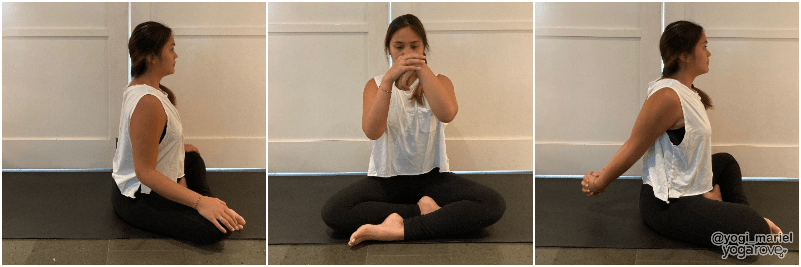
- Check your posture: Do you have a straight spine? Are you slouching and collapsing into your lower body? Poor posture can contribute to the symptoms of Carpal Tunnel Syndrome, so do a quick check-in Mountain Pose and notice where you can improve on your general posture to find support and openness in the body.
- Warm-up your wrists: Make fists and gentle circles with your wrists to slowly warm up the wrists before you begin your practice. You can also come onto all fours and turn the fingertips towards your body to gently stretch out your wrists.
- Open your chest and shoulders: A simple movement of interlacing your fingers behind your body can begin to open the shoulders and chest area to promote more space in your body before you begin your practice. Make sure to relax your shoulders and keep a slight bend in your elbows while interlacing your fingers.
How to Modify Yoga Poses for Carpal Tunnel
If you have Carpal Tunnel Syndrome, it is important to be mindful of your body and modify your poses when needed. Often, modifications to the wrists are the most helpful and it is a good idea not to place too much pressure on the hands and the wrists to avoid more inflammation.
To modify your poses:
- Use your yoga mat: Your yoga mat can be a useful prop to support your wrists and provide more cushioning. Roll or fold up the top of your mat and place your wrists right at the end of the rolled mat to provide elevation and support. It may take a few tries to find the best height of your rolled mat that successfully supports your wrists. You can use a rolled mat to support your wrists in postures like Downward Facing Dog, tabletop position, or child’s pose.
- Practice on your fists or your forearms instead of your hands: When practicing on your fists, you decrease the pressure on your wrists and strengthen and stabilize the muscles around your wrist joints. The same goes for practicing on your forearms instead of your hands. You can practice plank, side planks, and even Downward Facing Dog on your forearms.
- Use a block: A yoga block is a super useful prop when modifying any of your poses and can be helpful if you have Carpal Tunnel Syndrome. When practicing on your forearms, you can rest your forearms on two blocks instead of the mat for extra support.
Yoga for Carpal Tunnel Syndrome Home Practice
If it’s tough to make your way to a yoga class with your busy schedule, remember that you can always practice yoga in the comfort of your own home. All you need is yourself, a yoga mat, and possibly a video tutorial that can guide you through your practice. Once you feel more comfortable with the poses, you may choose to practice by simply listening to your body and practicing the poses that feel good for you.
There are numerous free videos online, including this one, which is specifically tailored for those with Carpal Tunnel Syndrome. This 36-minute practice stretches, strengthens, and opens different parts of your body related to Carpal Tunnel Syndrome. It is the perfect practice for you if you find yourself frequently sitting at a desk or a computer with tense and tired muscles.
Related Questions
Is it safe to practice yoga if I have Carpal Tunnel Syndrome? Yes, it is absolutely safe to practice yoga as long as you are mindful of your body and aware of the poses that you need to modify or avoid. Consult your physician before beginning your practice.
What poses should I modify or avoid if I have Carpal Tunnel Syndrome? Generally, try to avoid or modify poses that place a lot of pressure on your wrists or hands, such as arm balances. Be sure to back off anytime you feel a sharp pain or severe discomfort in your body.
What are the symptoms of Carpal Tunnel Syndrome? Symptoms include wrist pain, muscle weakness, tingling, or numbness in the fingers or thumbs. See your physician for a proper diagnosis of any pain or discomfort that you may feel in your body.


